OPINION
Big tech firms talk a good game on diversity, but has that led to much change across the industry?
The answer can be obscured behind corporate jargon.
But luckily, we have ways to drill down.
The ATO is a generous publisher, releasing onto the open internet many glorious datasets rich in detail.
It covers companies and individuals, but the one that best suits our purposes is a certain Table 15A, where occupations are broken down to the most granular level.
Here we can see the numbers of people with each job, divided by gender, alongside average and median pay.
It’s a treasure trove.
If you plot the entire workforce in the nation, the chart looks like this:
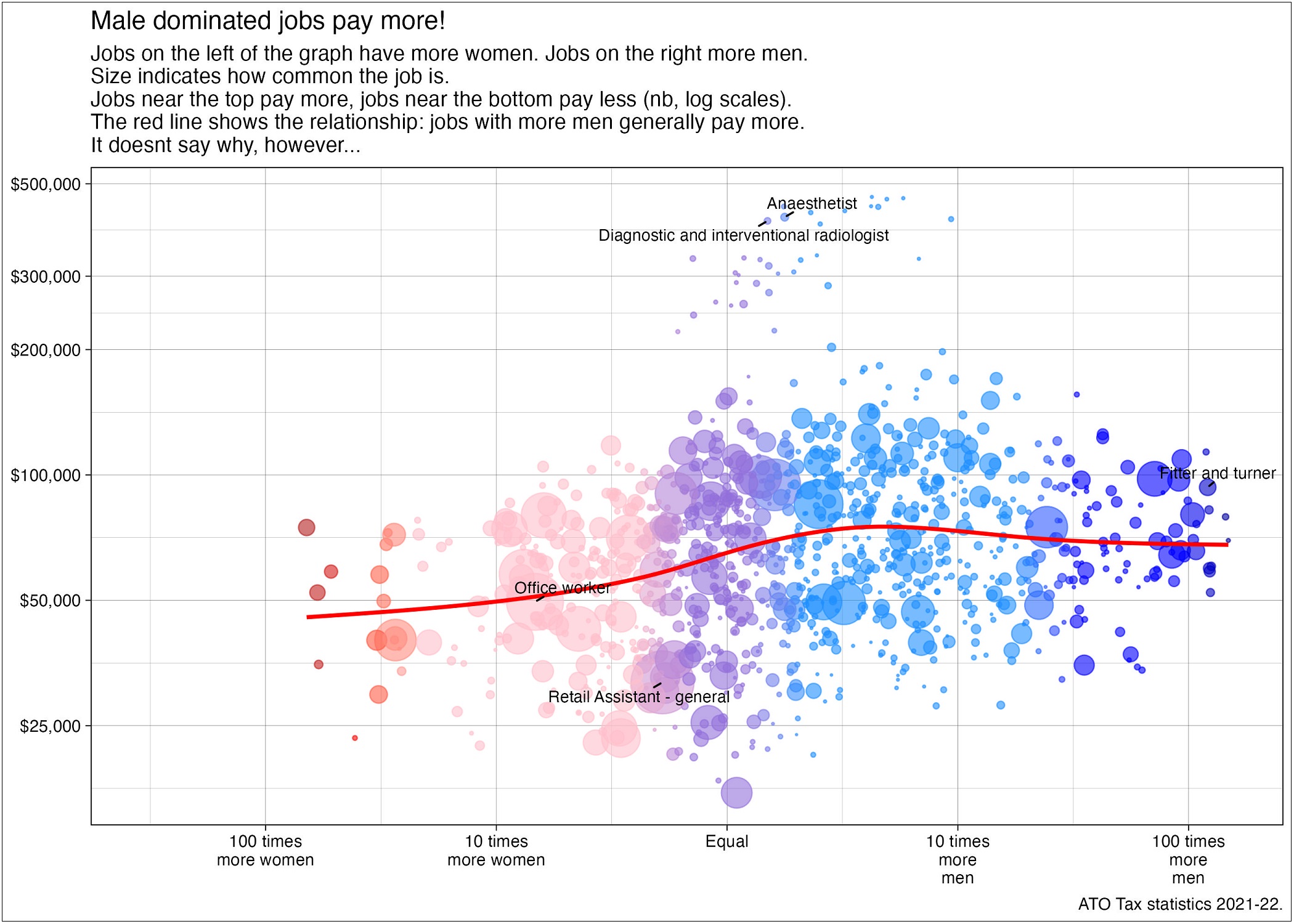
This is the state of play as of the most recent data, which relates to 2021-22 (I said the ATO is a generous publisher, not a quick one).
So where are the tech jobs in this mix?
The next chart isolates them.
They sit well above the average for pay, and are mostly in the blue zone – where men make up most of the office.
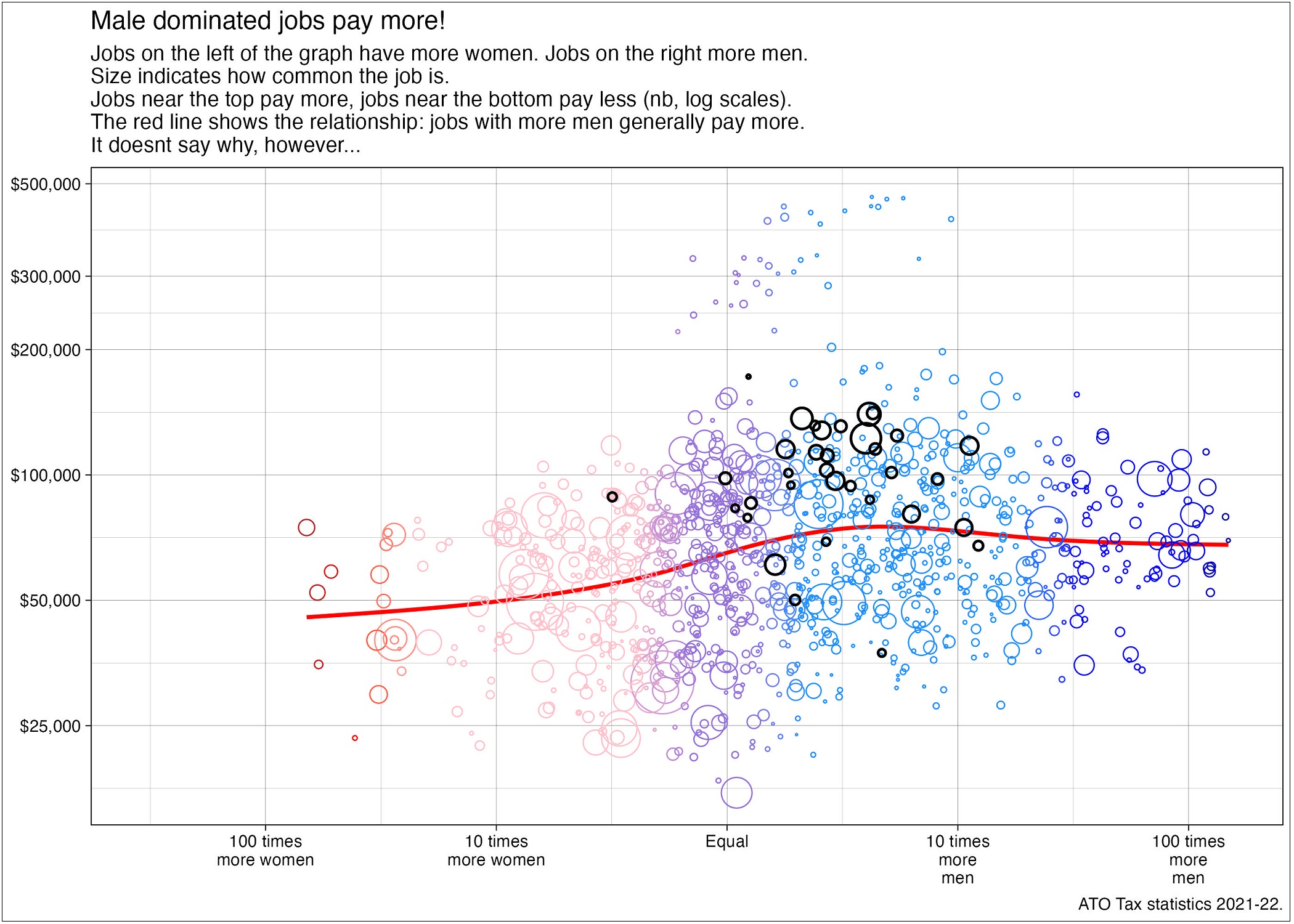
If we truncate those axes and zoom in on the tech cluster we can learn more.
The tech industry lacks a role as gender-biased as fitter and turners, but it is certainly still male-dominated.
It lacks a role as well rewarded as anaesthetists as well, but the pay is certainly good, as the next chart shows.
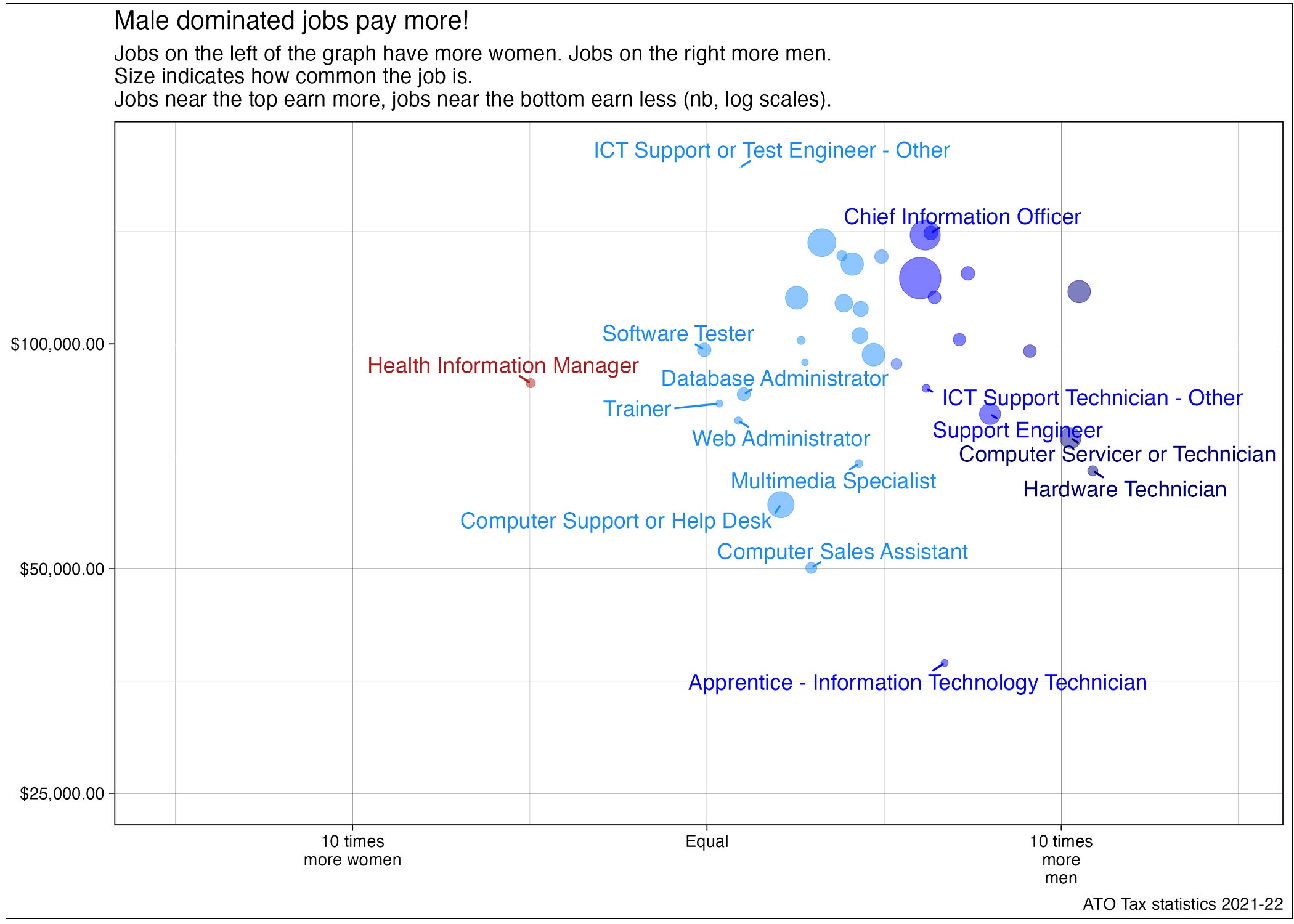
Like the economy overall, peak pay applies to office jobs for which the gender ratio is between two and four males to one female.
To the right we see some more practical, hands-on roles for which the pay is slightly lower. To the left are roles with a more even gender balance, which are usually lower paid.
So that’s a snapshot of the latest.
Here’s how that chart looked four years prior.
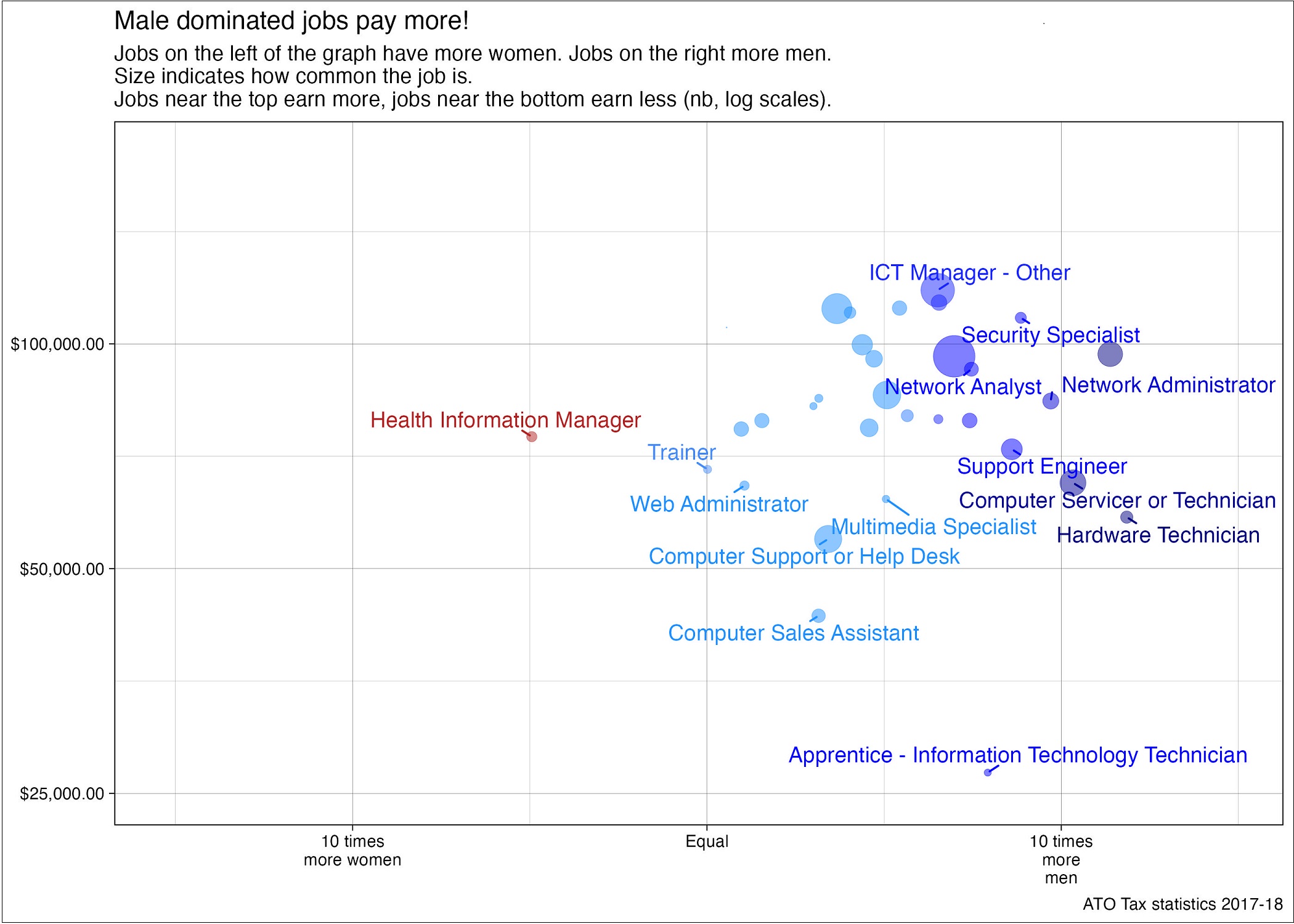
Straining your eyes to see the difference? Don’t stress. Change is gradual!
Below is another chart in which the rate of change is easier to see.
In it, jobs are presented from most male dominated at the top, to least at the bottom.
Each arrow shows the change over the preceding four years.
Security specialists and help desk roles have become significantly more diverse, while trainers and test engineers actually became more male dominated from a very equal starting point.
The biggest role in the field, software engineers, is becoming less male dominated, working its way toward having one female employee for every three male employees.
Female workforce participation is surging in Australia, meaning more women are to be expected in most workplaces.
Female workforce participation rose from 58.5 per cent a decade ago to 63.5 per cent in the most recent data.
For every 13 men that joined the workforce in the last ten years, 16 women joined.
A company or role that is unwelcoming to women is missing out on a bigger and bigger talent pipeline.
As the next chart shows, change is happening. But gradually.
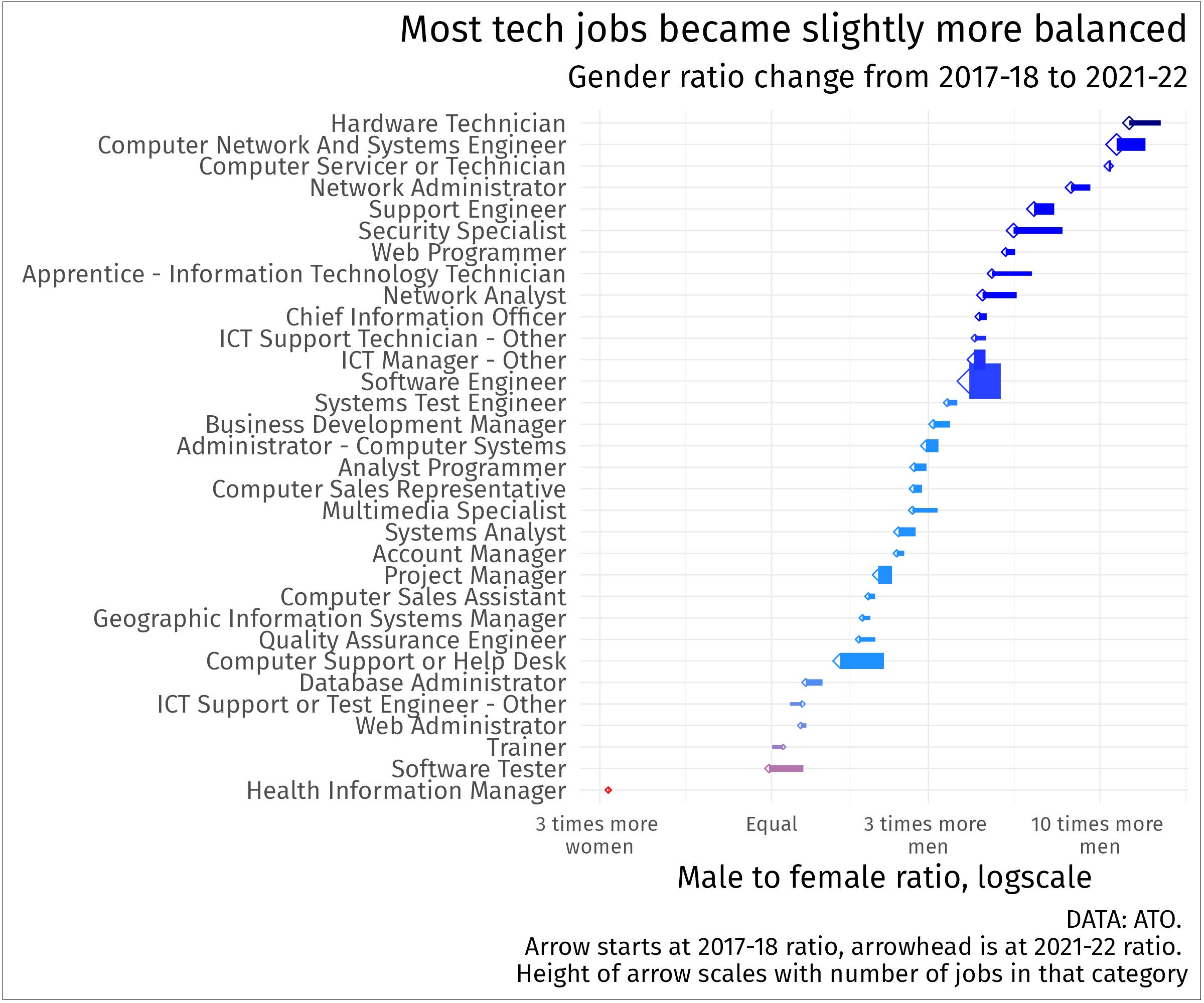
Despite the exceedingly gentle rate of change, a backlash against diversity is afoot.
The US Trump administration’s rejection of so-called “woke” values challenges the affirmations made by many in tech recently that diversity is good for business.
While some companies have remained steadfast, other leaders appear to have seen which way the wind is blowing.
Amateur martial artist Mark Zuckerberg, who is also the head of Meta, now says the economy requires more “masculine energy”.
Quite the change in tone from the boss of a company that boasted recently of its successes in creating diversity:
“In 2019, we committed to doubling the number of Black and Hispanic employees in the US and the number of women in our global workforce by 2024. We met and exceeded that goal for each of those groups – two years ahead of schedule,” said the company’s 2022 Diversity Report.
The theory of diversity is twofold: teams and organisations that can draw on diverse skills and experiences are expected to perform better than those which cannot, while fighting bias in hiring is supposed to ensure roles are filled by those with the strongest potential, not merely those who are the closest demographic match to the boss.
It remains to be seen if diversity initiatives will be undone in Australia as has been done in the US, but if so, these advantages could be lost.










